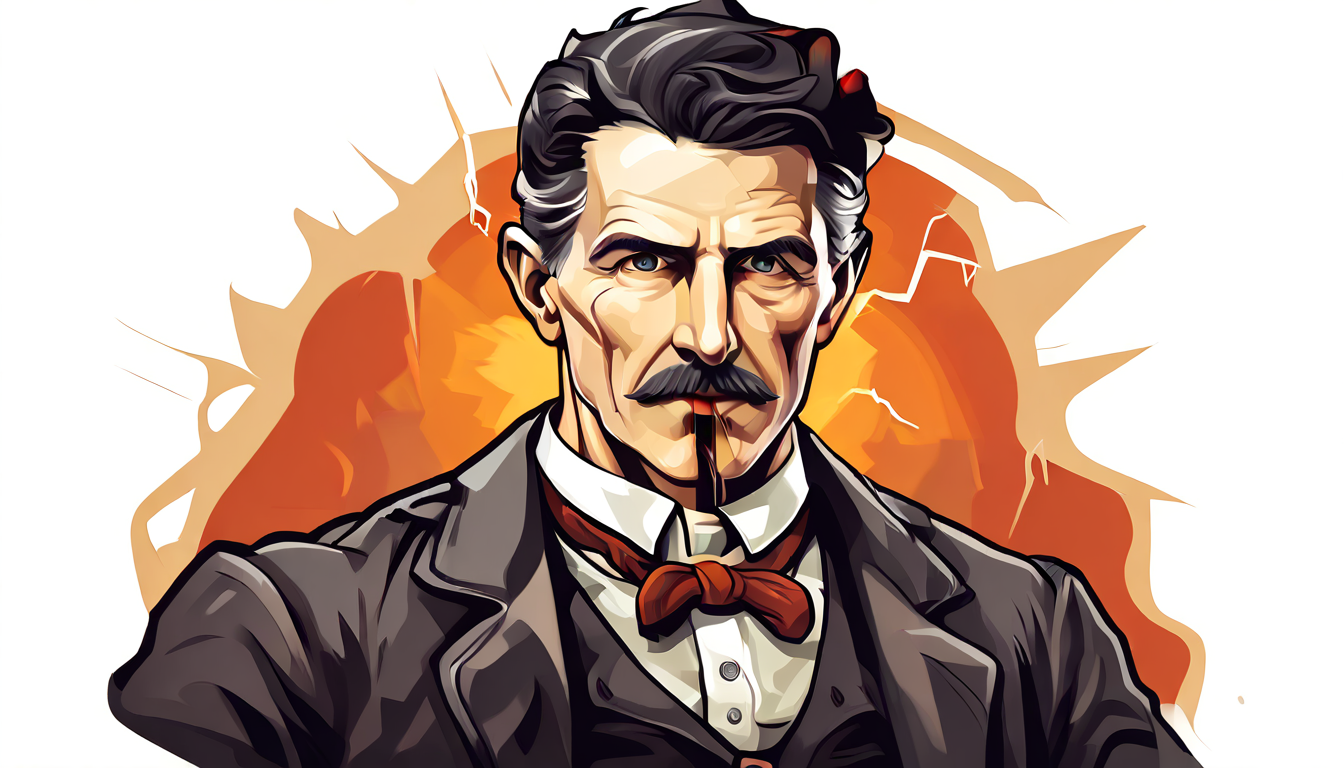Nikola Tesla: The Visionary Electrical Engineer
Nikola Tesla, a name synonymous with innovation and groundbreaking discoveries, left an indelible mark on the world of electrical engineering and technology. Born on July 10, 1856, in Smiljan, Croatia, Tesla's life was a testament to his unwavering passion for science and his unrelenting pursuit of harnessing the power of electricity.
Early Life and Education
Tesla's fascination with science and technology began at an early age, largely influenced by his father, Milutin Tesla, a priest and a writer. He attended the Technical University of Graz in Austria and later studied electrical engineering at the Charles-Ferdinand University in Prague. However, due to financial constraints, Tesla was unable to complete his degree and instead opted to work as an electrical engineer in Budapest, Hungary.
The War of Currents: Alternating Current (AC) and Direct Current (DC)
In 1884, Tesla emigrated to the United States to work for Thomas Edison, a pioneer in direct current (DC) technology. However, Tesla's vision for the future of electricity differed from Edison's, as he firmly believed that alternating current (AC) was the superior choice. The 'War of Currents' had begun, with Tesla and Edison on opposing sides. Tesla's AC system eventually prevailed, and it has since become the standard for the world's electrical power systems.
One of Tesla's most significant contributions to AC technology was the development of the polyphase system, which enabled the efficient transmission and distribution of electrical power over long distances. This innovation revolutionized the field of electrical engineering and transformed the way we generate, transmit, and utilize electricity.
The Tesla Coil: A Breakthrough in Wireless Communication
In the late 1800s, Tesla began experimenting with high-voltage electricity and its applications in wireless communication. He invented the Tesla coil, a device capable of producing high-voltage, low-current electricity, which paved the way for the development of radio communication. The Tesla coil consists of two coils: a primary coil connected to a high-voltage power source, and a secondary coil that resonates at a specific frequency, producing a significant voltage increase.
The Tesla coil was a crucial innovation in the development of wireless communication, as it demonstrated the possibility of transmitting energy wirelessly over long distances. Tesla's work in this area predated that of Guglielmo Marconi, who is often credited with inventing the first practical wireless telegraph.
Wireless Communication and the Wardenclyffe Tower
Tesla's vision for wireless communication extended beyond wireless telegraphy; he envisioned a world where energy could be transmitted wirelessly to any point on the globe. To achieve this, Tesla designed and began constructing the Wardenclyffe Tower, a 187-foot-tall structure intended to be a hub for global wireless communication and energy transmission.
Unfortunately, the Wardenclyffe project was never completed, as Tesla faced significant financial difficulties and the project was eventually abandoned. However, the idea of wireless energy transmission has seen a resurgence in recent years, with the development of technologies such as Wi-Fi and wireless charging.
Significant Challenges and Personal Life
Tesla's life was not without its challenges. He faced intense competition from Thomas Edison and his associates, who worked tirelessly to discredit Tesla and his AC technology. Additionally, Tesla's obsessive focus on his work led to difficulties in his personal life, including a series of failed relationships and declining physical and mental health.
One of the most notable challenges Tesla faced was the 1895 fire that destroyed his laboratory in New York City. The fire resulted in the loss of many of Tesla's manuscripts, notes, and equipment, which would have otherwise shed light on his research and experiments.
Legacy and Impact on Modern Society
Nikola Tesla's impact on modern society is undeniable. His work on AC technology has enabled the widespread adoption of electrical power, transforming the way we live, work, and interact with one another. The Tesla coil, a fundamental innovation in wireless communication, paved the way for the development of radio, television, and other wireless technologies.
Tesla's legacy extends beyond his technological innovations; he remains a symbol of innovation and creativity, inspiring generations of scientists, engineers, and entrepreneurs to pursue their ideas and challenge conventional thinking.
Today, Tesla's name is associated with companies such as Tesla, Inc., a leading manufacturer of electric vehicles, and the Nikola Tesla Museum in Belgrade, Serbia, which houses a vast collection of Tesla's papers, notes, and personal belongings.
In conclusion, Nikola Tesla was a visionary electrical engineer whose groundbreaking contributions to AC technology, wireless communication, and the development of the Tesla coil have had a lasting impact on modern society. His legacy serves as a testament to the power of innovation and the importance of pursuing one's ideas, no matter how ambitious or unconventional they may seem.







